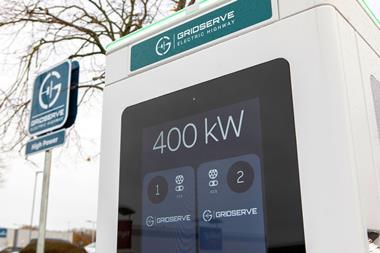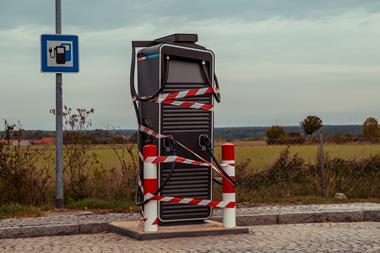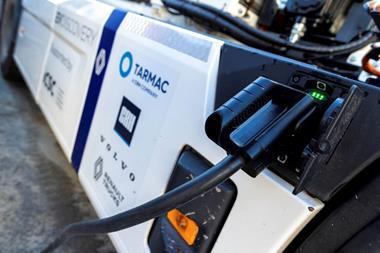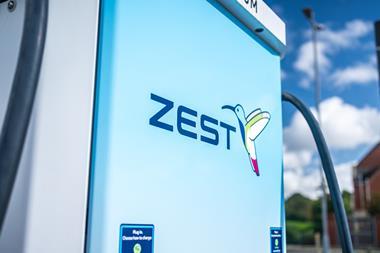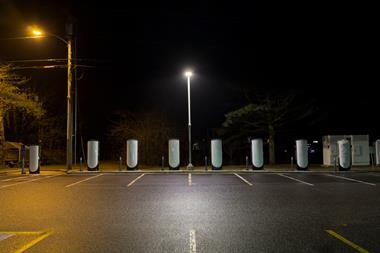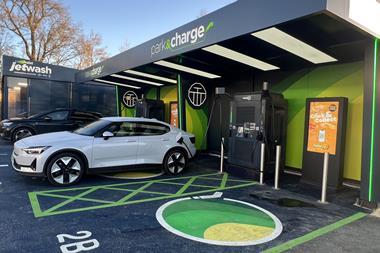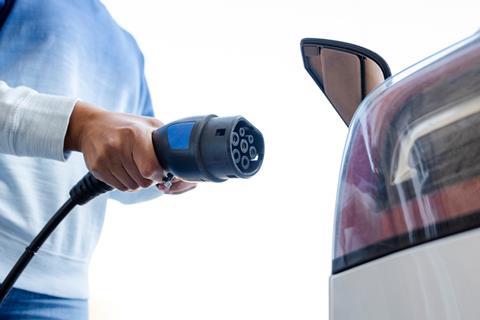
It seems everyone’s racing to put EV chargers in. From pubs to drive-through outlets, from garden centres to hotels, everyone is getting in on the act.
Asif Ghafoor, CEO of Be.EV, says it’s a space that’s getting more and more saturated, and if forecourt operators want a piece of the action, they’ll need to act quickly.
“You need to be putting the right chargers in the right places and thinking about the longevity of the site if you’re to attract drivers,” he says.
“Large-scale charging hubs are the future of the EV rollout, and while they look like a large undertaking, many chargepoint operators (CPOs) will cover the costs themselves.
“Disused brownfield land and old petrol forecourts are the perfect location for these sites. They’re an easy, future-proof way to regenerate the local area and create an environmentally EV charging hub.”
This is the idea behind Be.EV’s first ever Charging Green, which Ghafoor says is a blueprint for the forecourt of the future.
It is being created on the corner of Reliance Street and Oldham Road, the main route between the centre of Manchester and Oldham.
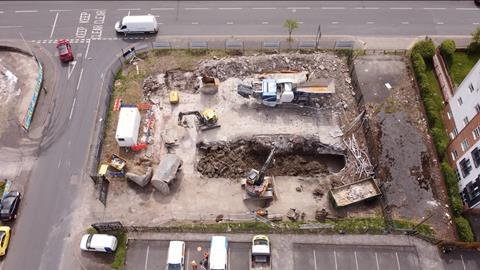
It was originally a petrol forecourt, but was decommissioned over 15 years ago, and has been an eye sore for the community ever since.
“It’s the prime site for an EV charging hub, with over 26,000 commuters driving past every day, and over 1,242 EVs already registered in the surrounding area,” says Ghafoor.
“It’ll not only serve as a convenient spot for passers-by to top up on their way to work, but also as a reliable charging option for local residents.”
The project is being constructed in tandem with Manchester City Council’s extensive regeneration of the Failsworth area, with over £550m of funding committed to the region over the past few years.
“As Labour looks to reform planning laws and build more houses, there will be many areas across the country facing similar regeneration – the communities of which will require EV charging,” he explains.
“The Charging Green is an important part of providing cutting-edge services for the Failsworth community, without being a burden on the taxpayer.”
Be.EV funds its projects completely and also gives landowners a cut of the profits. The business is hoping that its commitment will help to attract further investment in the area.
“Sites like Oldham Road reduce the need for CPOs to build on virgin ground, which might be better suited for green space, nature reserves or affordable housing,” says Ghafoor.
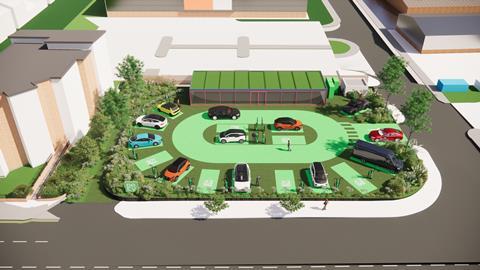
The construction
Before construction could begin on the site, Be.EV’s first step was to decontaminate it - removing all the old petrol infrastructure and ensuring the soil was environmentally safe.
The site has undergone an extensive decontamination process to remove old petrol tanks and clean the soil and is soon to be certified as a green site by Manchester City Council.
As soon as Be.EV gets approval from the local authorities, it will be ready to break ground.
“This is one of the first EV charging sites in the UK to undergo decontamination of this kind, proving old sites that used to serve ICE vehicles can be repurposed to help to power the net zero transition,” says Ghafoor.
But before Be.EV underwent any decontamination, it had to make sure the design of the site was in line with its environmental goals and would provide a good experience for drivers.
Ghafoor says that with many sites across the country, this doesn’t get much consideration beyond a coffee shop and toilets. Be.EV’s site will, of course, have these amenities, but much more was considered in the site’s design.
With Oldham Road’s 16 ultra-rapid charging bays, drivers will only be on site for approximately 20 minutes, but that’s still a long time to be standing around near a main road.
Be.EV therefore considered the surrounding environment during the design phase and designed the site to reflect a natural oasis. The idea was to create a tranquil, green space for EV drivers to charge their vehicle – not just another car park on the side of a main road.
“CPOs that are helping to support the UK’s transition to cleaner transport need to take the same approach to their infrastructure.
“For Be.EV, that means every site being as environmentally responsible as possible, and Oldham Road is no exception. Every aspect of the design from Be.EV’s architecture firm, Architect That, reflects that philosophy,” explains Ghafoor.

Ed Lipton, director at Architect That, was in charge of designing the Charging Green and made sure that trees and biodiversity formed an integral part of the site’s design – all part of a commitment to a “net-zero biodiversity uplift” to bring nature back into the area. Mature trees and a wildflower garden will be included. Solar panels will also be installed, supplying energy required to power the commercial spaces. Rainwater tanks will also be on-site for irrigation, further adding to the site’s sustainability.
Be.EV is also planning to re-use as much original concrete from the site as possible to keep the environmental impact as low as is feasibly possible.
Safety was also a huge concern for Be.EV. The CPO recognised that drivers want to charge their vehicles in safe, secure locations with accessible bays, which is why CCTV will be installed to monitor the entire site.
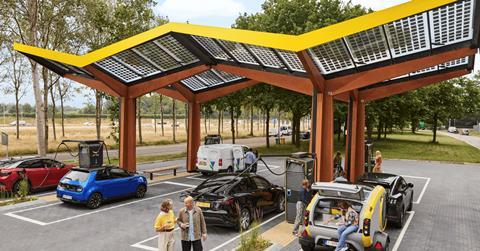
The future is electric
Another company keen to get its hands on forecourt sites is Fastned. UK country manager, Tom Hurst, explains: “The future is electric. With no nasty fumes and EV charging times of around 15 minutes, people will want to spend time at charging hubs to stretch their legs and grab some refreshments. This transition is where the next business opportunity is; indeed we are currently developing two former PFS sites and developing alongside another four. So we are super-excited to work with more independent forecourt owners to help them decontaminate and transform their forecourt into a Fastned charging hub through our Clean Start offer.”
Fastned is currently looking to lease petrol forecourts for EV charging and, with its Clean Start programme, is offering up to £250,000 in remediation costs.
Hurst says one big hurdle for traditional forecourt operators to move over to EV charging is the need to decommission underground fuel tanks and remediate polluted soil, and the costs involved.
Fastned’s Clean Start offer aims to take away that concern and help retailers make the switch.
“We are offering the chance to take away the risk,” says Hurst. “We fund the grid connection and manage the plans for reconstruction and rebuild, all while the retail at the site is still operating. We’re used to dealing with different locations. With some older sites, it’s a full rebuild, for other more modern filling stations, we’re operating within the existing dimensions.”
Forecourt retailers can control how large the transformation will be, with the offer ranging from a total makeover that includes Fastned’s solar-powered canopy, or just replacing the fuel pumps with chargers and rebranding the existing canopy after remediating the soil.

Meanwhile, with more than one million EVs on the UK’s roads, and sales growing – albeit not as fast as is needed for the country’s net zero targets – there is undoubtedly a need for more chargers. Especially as the new Labour government is expected to bring forward the ban of sales of new ICE vehicles to the original 2030 date
Mark Frostick, associate in automotive and roadside at Rapleys, says: “While there is a well-established network of petrol stations for those vehicles, the number of EV charging stations has had to expand rapidly to keep up with demand.
“While the availability of charging at home has allowed many to keep their cars topped up, the charging sites open to the general public have been more difficult to obtain, and if that number is to continue to expand then there will have to be some adaptability, and fast. There are some major challenges in acquiring a new roadside rapid charging site that may hold back the ability to deliver the much-required mass roll-out.”
His colleague, Brittany Marsland, associate in land development project management at Rapleys, discusses the lack of available plots: “The most attractive locations are those alongside busy transient roads, especially in the main urban areas, as this is where demand for charging is likely to be the highest.
“However, these locations are likely to already be well developed. Those that do come to the market are likely to see strong competition from a number of other similar operators such as drive-thru restaurants, car valeting and the rise of alternative fuels, such as Biogas, makes site finding even more difficult.”
Frostick says the market has generally been looking at leasehold options rather than freeholds and the market requirement is for long lease lengths of 15 to 30 years, which is generally longer than most other occupiers would consider.
“The main reason for this length of lease is the relatively high set-up costs. Operators will generally undertake all of the works themselves with the costs relating to both getting sufficient power to the site and also upgrading the local power supply.
“Due to the high set-up costs, the operators are needing significant lease lengths to be able to amortize them. This is causing issues for a couple of reasons. Firstly it rules out a large number of sites that are already let as it’s likely the head lease will be significantly shorter or will have tenant breaks, so an EV operator cannot be given sufficient security on their lease. Alternatively, even if a sufficient lease period could be available, some landlords will not look to tie up a site for that long especially if it is part of a wider development.”
Then there are issues around energy supply. “We have already seen the demand for electricity rise substantially with it projected to increase more, leading to potential grid overloads, especially during peak charging times,” says Frostick.
“Many electrical grids were not designed to handle the high and variable loads imposed by numerous EVs charging simultaneously. Upgrading the electrical infrastructure to accommodate this new demand requires substantial investment in both the generation and distribution networks. This includes not only increasing capacity but also integrating smart grid technologies to manage and distribute electricity more efficiently.”
He says that while the availability for 7kW is readily available, it is insufficient for public facilities, especially at motorway services with limited free parking time.
“For a rapid charging site, the required power is quite substantial. However, in some locations, there is a lack of available supply, either due to insufficient grid capacity or the high cost of extending the supply to the site.”
In a recent case, the Rapleys team assessed a potential EV site alongside the A1, which required electrical upgrades. The only way to get sufficient supply to the site would have been a new connection under a railway line and river, with the initial estimate of costs being circa £4m. “On this basis, a site will never stack up against the likely level of return. While this is an extreme case we are still seeing connection costs regularly in the £100k-plus region. As demand improves, site payback time will decrease but in the meantime, it is a significant negative when considering other uses.”
Frostick also points to a noticeable lack of a comprehensive strategy to aid the mass roll out of charging points across the UK. This is underpinned by huge regional disparity – according to Gov.UK, in London there are 210 chargers per 100,000 people but in the North West this number stands at just 49 per 100,000 and in Northern Ireland it falls further to 24.
He says the reliance on non-renewable energy sources for electricity generation can offset the environmental benefits of EVs, highlighting the need for a transition to renewable energy to truly capitalise on the sustainability potential of EVs.
“While the expansion of sites continues, we are likely to see more innovative solutions to the problems and the market is already seeing some flexibility. But we also need government support, and that means accelerating the roll out of EV charging points and a strategy/roadmap of how to do so. We only passed the 50,000 charging point mark recently and with Labour’s renewed pledge to ban ICE cars by 2030, this needs to rise quickly to facilitate uptake across the country, while initiatives to reduce cost – both for the infrastructure and the consumer.”

Unique opportunity
Finally, Maebh Reynolds, CEO at GoPlugable, believes forecourts have a unique opportunity to elevate EV charging from a basic amenity to a strategic asset, enhancing customer engagement and revenue.
“Our survey of over 500 EV drivers showed that 63% are more likely to frequent and spend at locations with EV charging. This highlights a substantial market opportunity for forecourts to capitalise on. By integrating EV charging stations, forecourts can control the customer journey, using these points to gather data and understand consumer behaviour. This information can be used for personalised promotions, transforming the forecourt into a key destination.”
She says forecourts can start with minimal investment by mixing AC and DC chargers to suit their customer base. “Collaborating with service providers enhances visibility to EV drivers, turning charging infrastructure into a marketing tool that attracts more customers. This approach not only meets existing needs but also lays the groundwork for future growth as the EV market expands. Choosing the right partners – those who can boost your forecourt’s visibility, help gather valuable consumer data, and provide effective promotional tools – is crucial. I recommend exploring our business suite designed specifically for the EV market to maximise these opportunities.”






















